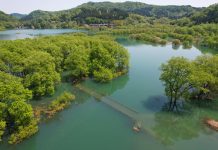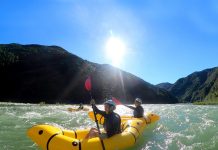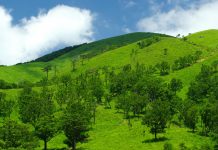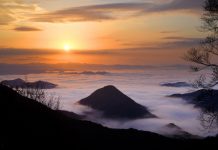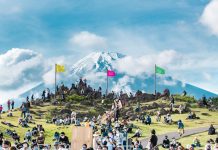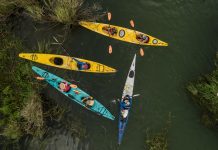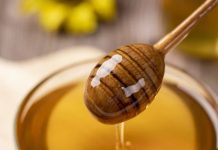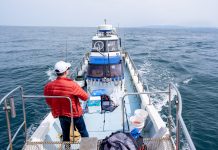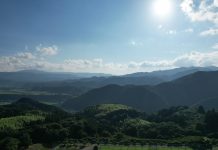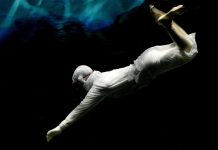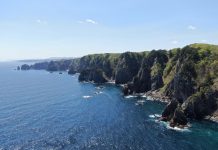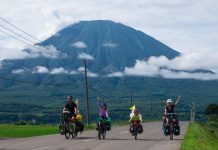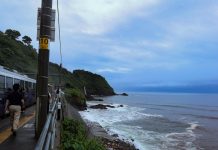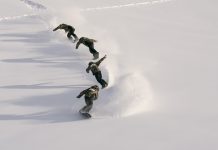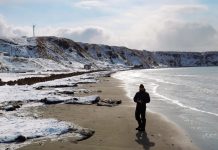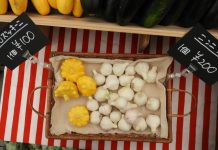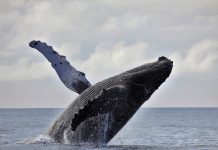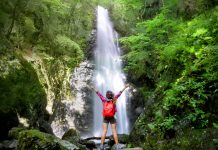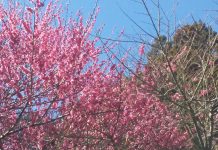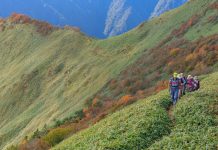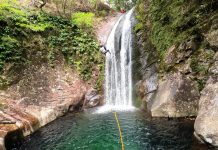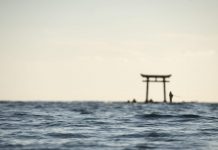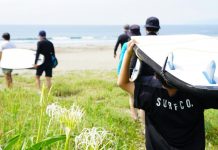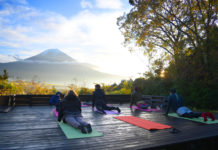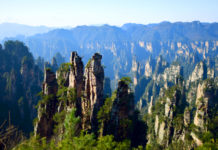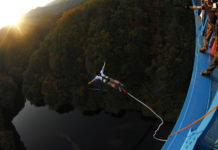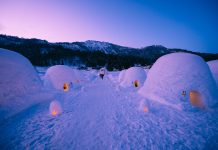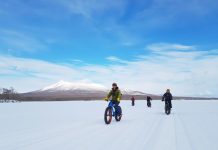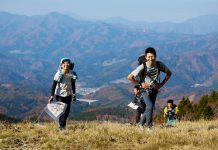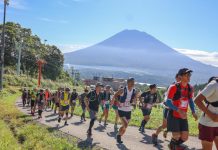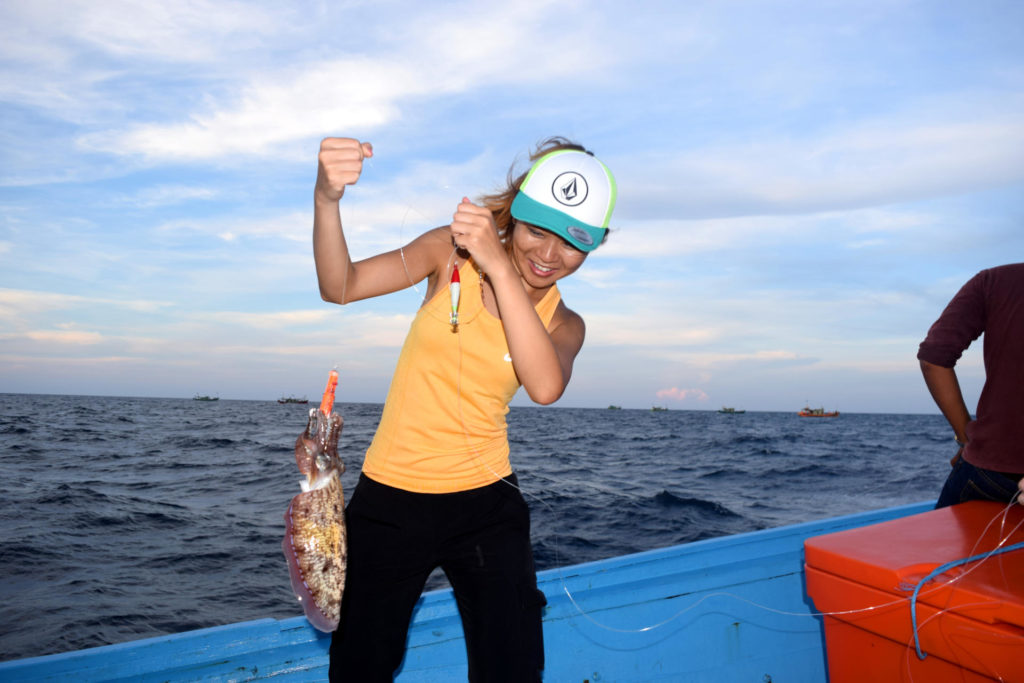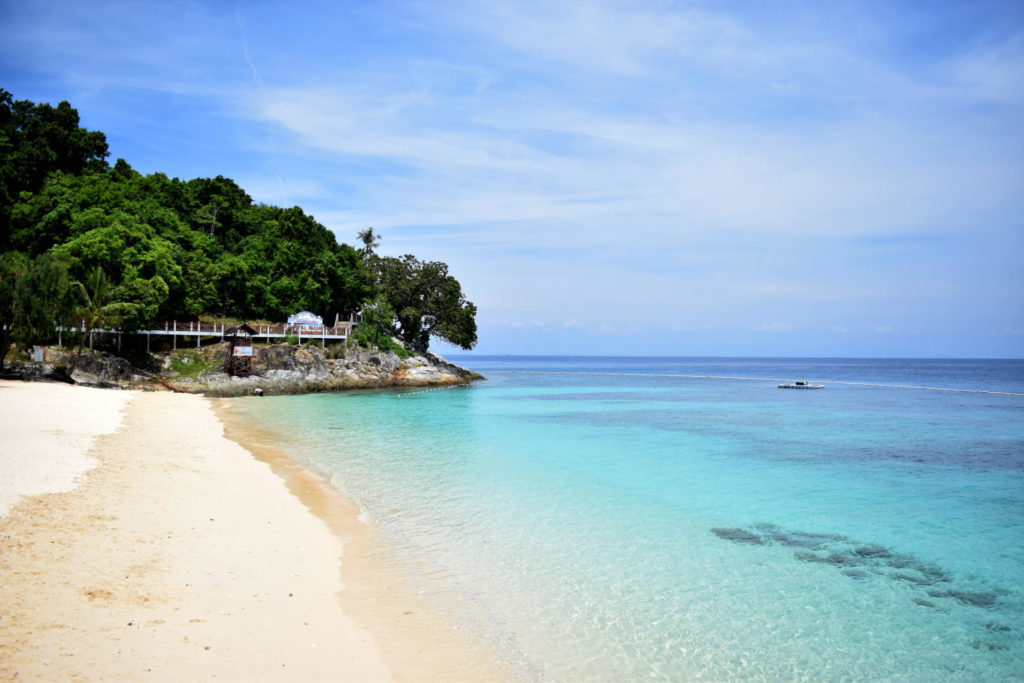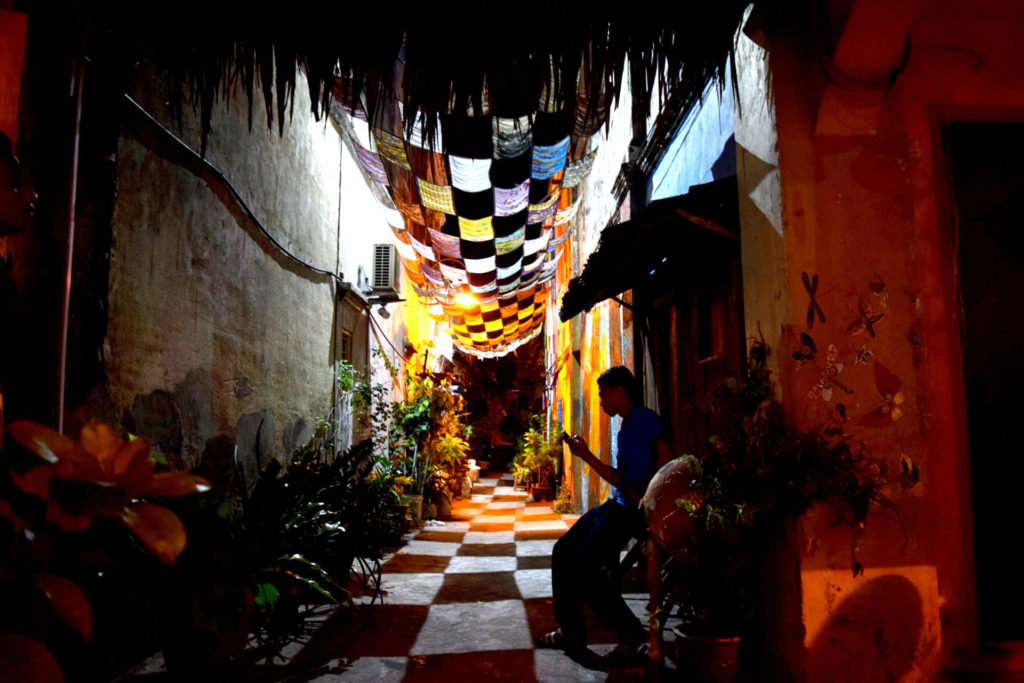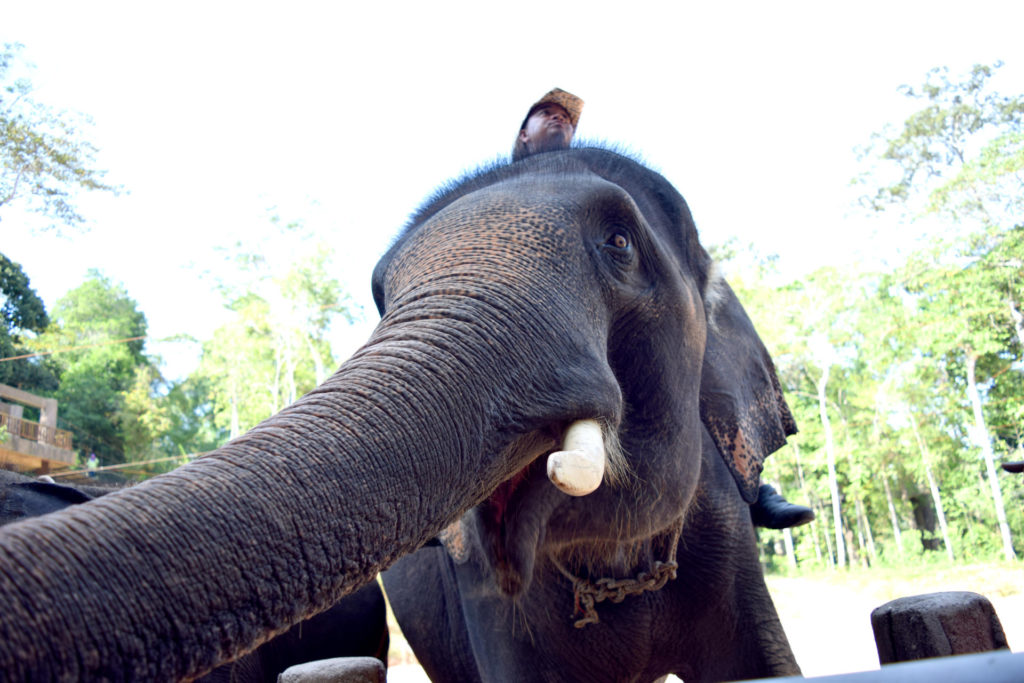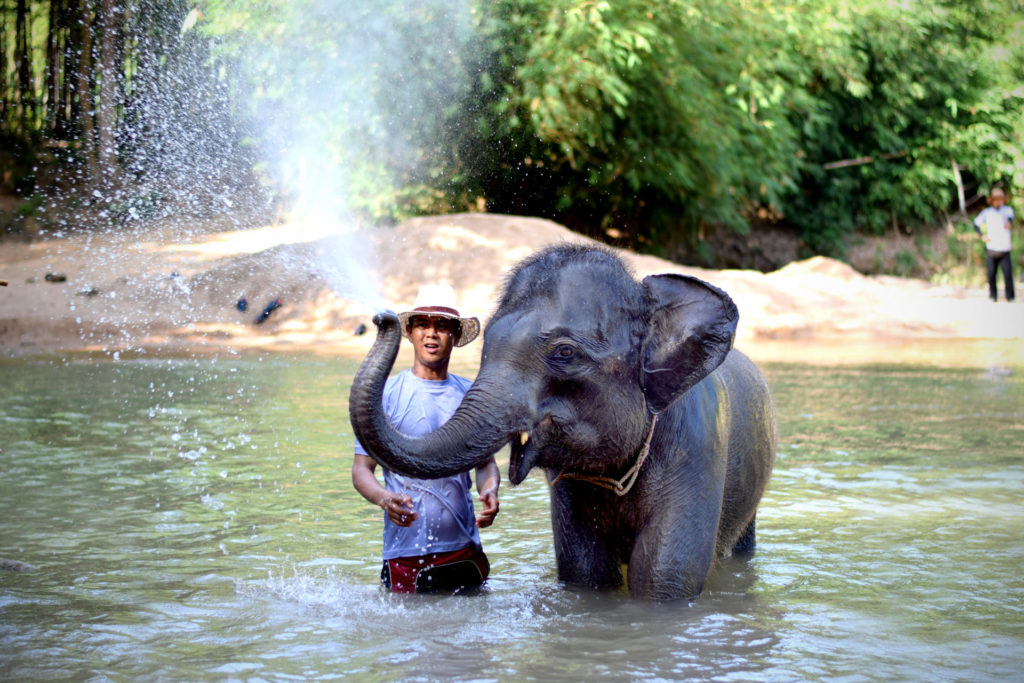The Malaysian evening sun was blazing on the horizon as we entered the choppy South China Sea. As the sun set, local Muslim fishermen completed their evening prayers on the roofs of their fishing boats. Aided by a full moon, the seasoned fishermen turned on lamps in hopes of attracting sotong (squid) closer to the vessels.
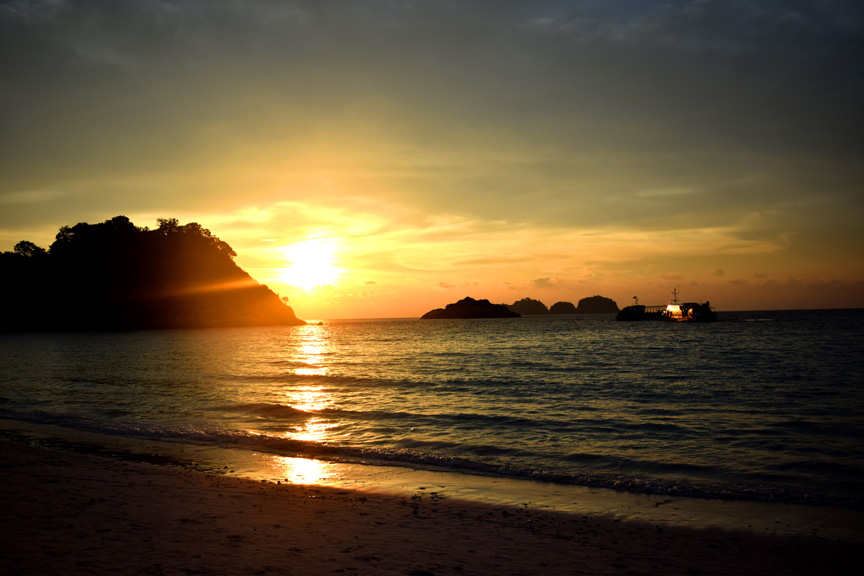
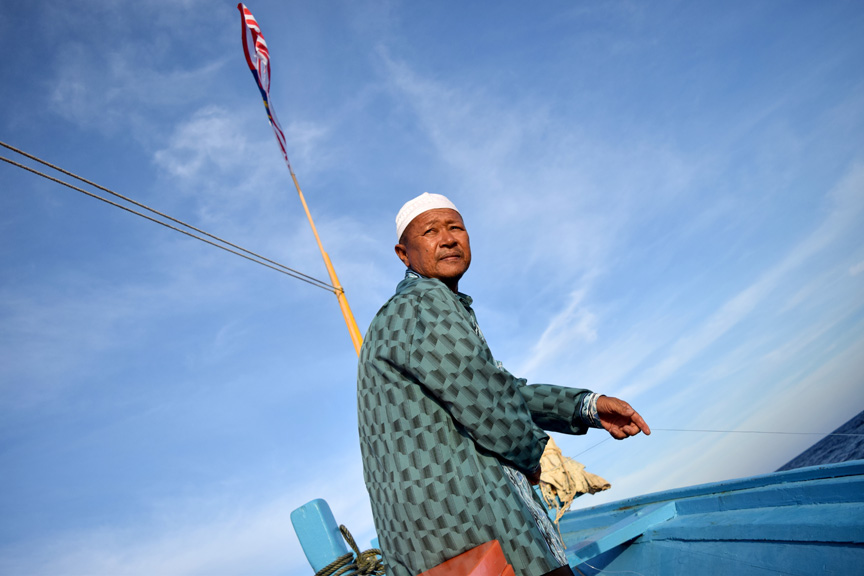
From April to September, sotong approach the waters near Terengganu in large numbers to lay their eggs. Fishermen here, on the northeastern coast of Peninsular Malaysia, set off in colorful boats, using their instincts and experience to locate the valuable catch. Once a year, visitors can join the action. We started off late, as squid are most active at night, attracted to light as they hunt in shoals near the seabed. The boat stopped, and we set anchor about 20 minutes off the coast in deep water.
“This is one of the spots where squid gather,” our boat’s helmsman said with confidence.
What followed was a test in patience. Instead of a fishing rod, we were armed with a simple jig set, which consists of a handline made of nylon that has three luminous “jigs” attached with sharp spikes at the end of the line.
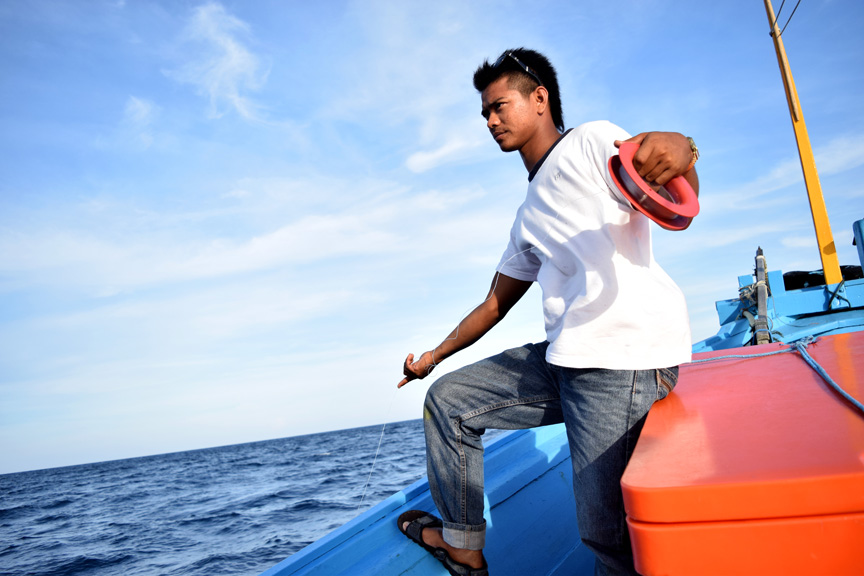
I threw the jigs into the water and let the line run until it touched the sea floor. As instructed, I began “jigging” the line, jerking the line up and down and waiting for an unsuspecting squid to wrap its tentacles around the hooked lures. The strong currents added deceptive weight to the line, but once a squid latched on, there was no mistaking; it was time to reel in fast before the squid could escape.
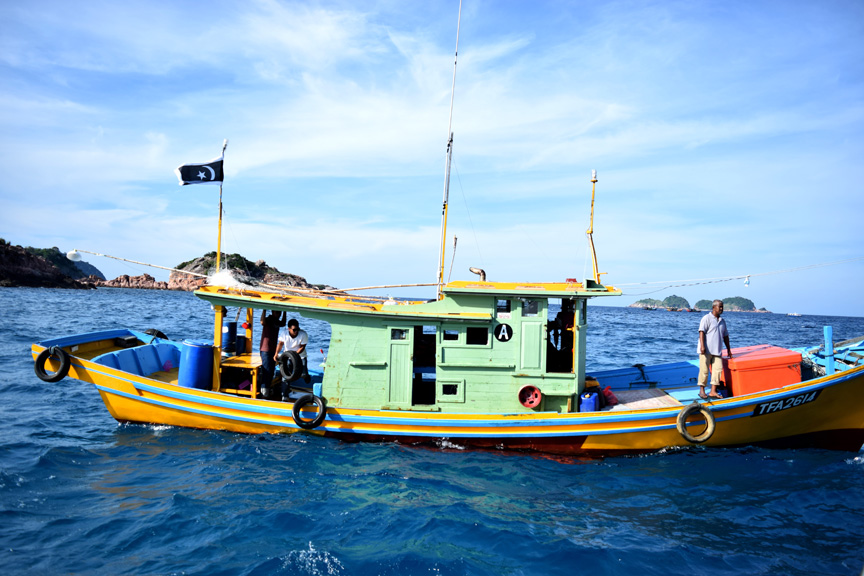
At the end of the long night, we fried our bounty with spicy curry powder over a small stove on the boat. The rest we saved for ketupat sotong versi Terengganu, or squid filled with glutinous rice and cooked in sweet coconut milk and spices.
With a long coastline facing the South China Sea, Terengganu has been a key trade route and fishing point as early as the 6th century. Fishing remains a major industry today, along with petroleum, gas and tourism. Squid jigging is one of the earliest, simplest and most economical forms of catching squid and is still practiced by small-time fishermen and hobbyists.
In recent years, however, local fishermen struggle against corporate trawlers, relocating youth and land reclamation, which has led to dwindling numbers of fish. Although Terengganu faces development in its coastal cities, dig deeper, and you will find a tight-knit spirit within the local communities. In keeping with Malaysia’s unbridled love for festivals, Terengganu hosts several events planned to attract tourism that will directly give back to the community, including the annual International Squid Jigging Festival. For more information on how you can join, visit www.facebook.com/SquidJiggingTGG.
Getting There
Visitors traveling to Terengganu will fly into Sultan Mahmud Airport via Kuala Lumpur International Airport. AirAsia, Firefly, Malaysia Airlines and Malindo Air all have regular flights from Kuala Lumpur.
Essential Info
Tourism Terengganu can help organize a unique experience and the age-old tradition of jigging along the coast of Terengganu that was once the livelihood of the fishing village community. You can also rent a boat or arrange a fishing trip at your hotel.
Five Things to do in Terengganu
1. Snorkel and Dive in Redang Marine Park
Redang Marine Park is comprised of nine small islands 14 kilometers off the coast of northeastern Terengganu, with Pulau Redang being its biggest island. Here you can snorkel and dive in waters teeming with damselfish, sergeant majors, wrasses, parrotfish, triggerfish, moray eels, groupers, batfish and angelfish.
The busiest house reef is around Tanjung Tengah in Pasir Panjang where lucky visitors might see Green or Hawksbill turtles, squid, barracuda and black-tip sharks.
Redang is an hour ferry ride from Shahbandar Jetty in Kuala Terengganu (Terengganu’s capital). The public ferry comes three times a day, and tickets can be purchased at the jetty for MYR50 one-way. Always check with your resort for ferry timings and cancellations and check in 30 minutes before departure.
There are 14 resorts at Redang, ranging from budget hotels to luxury resorts.
2. Get Down to Chinatown
“Terengganu” means rainbow in Malay, and vibrant Chinatown certainly lives up to that name. What makes this Chinatown different is the blend of Chinese and Malay influences resulting in Peranakan culture. Next to your usual pharmacies, wet markets and herbal shops are street art and open-air exhibitions by local creatives.
While the streets tend to be sleepy during the day, weekend nights are filled with young film camera-toting hipsters hanging out in cafes, showcasing their artwork and street performances.
3. Malaysian Surf
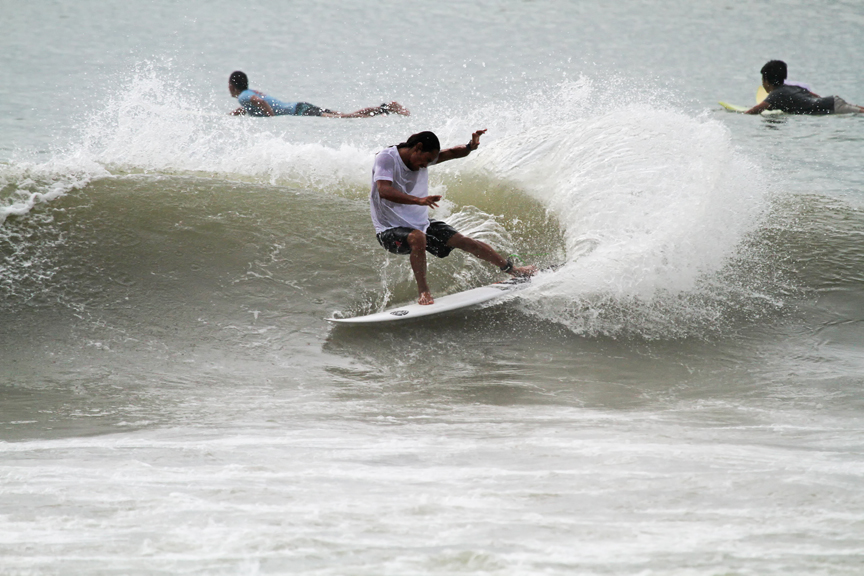
Surfing in Southeast Asia conjures up images of Bali or Cloud 9 in the Philippines. But during the monsoon months of November to March, you will be surprised to find decent waves at lesser-known surf spots such as Batu Burok in Kuala Terengganu and Kijal in southern Terengganu.
Surfing may be an emerging sport in Malaysia, but big surf brands including Quiksilver have already hosted international competitions here.
4. Kenyir National Park Recreation
Lake Kenyir, the largest man-made lake in Southeast Asia, is a popular spot for angling during monsoon season and water sports during the dry months. Constructed in the late ’70s, this freshwater lake was built to generate hydroelectric power and stop flooding.
Sitting on the border of Taman Negara National Park, Lake Kenyir and its surrounding rainforest attracts hikers who want to explore waterfalls and caves. Hiking tours can be arranged from lakeside resorts such as Kenyi Eco Resort.
If you are traveling with children, bathe with elephants at the Sungai Ketiar Elephant Sanctuary before taking a boat to Kenyir Water Park. This open-air, floating bouncy-house- meets-obstacle-course will be an instant hit with kids (and parents).

5. Explore Islamic Culture
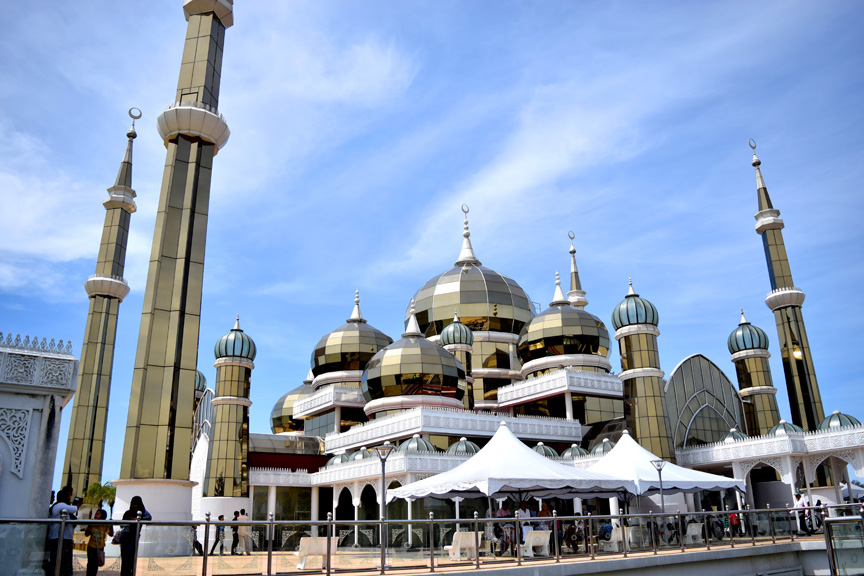
Terengganu was the first Malay state to receive Islam and today, Malays make up nearly 95 percent of Terengganu’s population. The Crystal Mosque in the Islamic Civilization Park is a popular attraction with its glass domes reflecting the sky during the day and illuminating the Terengganu River at night.
Visitors may enter the mosque but must wear long-sleeved robes and hijabs for women (available at the entrance). The massive Terengganu State Museum in Bukit Losong is a 20-minute ride from the city and houses ancient artifacts, crafts and Islamic artwork.

